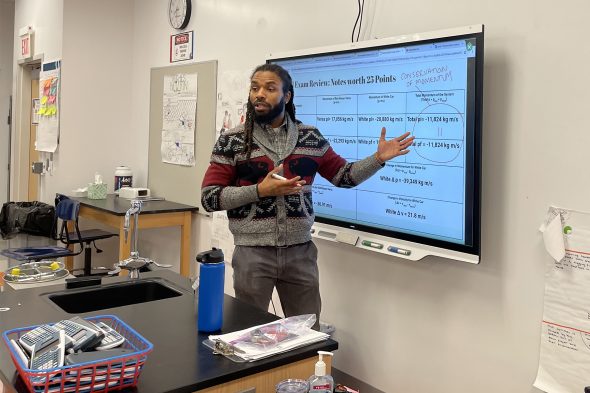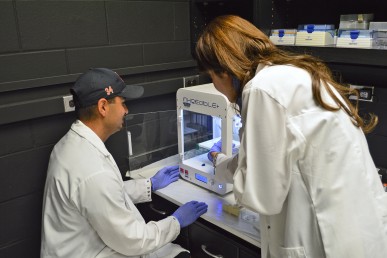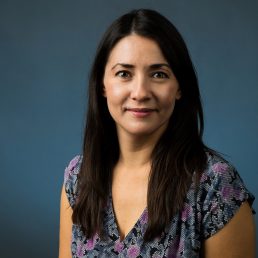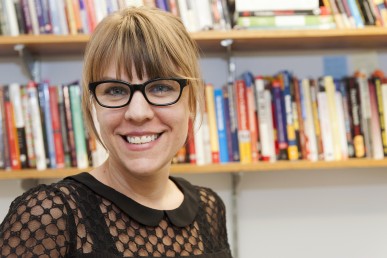UIC receives grant to prepare CPS educators to teach next generation of biomedical engineers

The University of Illinois Chicago College of Engineering and College of Education have received a $538,237 federal grant to continue a summer biomedical engineering program that has trained 27 Chicago Public Schools science teachers over the last five years.
The five-year grant from the National Institute of Biomedical Imaging and Bioengineering, part of the National Institutes of Health, was awarded in January to continue funding the Biomedical Engineering Experience for Science Teachers program.
Since the enrichment program began in 2016 at UIC, teachers from high schools throughout the city have participated in the six-week summer program and have gone on to use their training to educate thousands of CPS students.
The goal of the program is to increase the pipeline of students interested in biomedical engineering, said Miiri Kotche, the Richard and Loan Hill Clinical Professor of Biomedical Engineering in the College of Engineering, who is principal investigator on the grant along with co-principal investigator Jennifer Olson, clinical associate professor of curriculum and instruction in the College of Education. Kotche recently earned an Excellence in Teaching Award and Olson is a past Silver Circle Award winner.
“Our aim is to expose and educate CPS science teachers to what biomedical engineering is, and hopefully with their exposure, and hopefully their great experience at UIC over the summers, they will help communicate that to their students,” said Kotche, who is also associate dean for undergraduate affairs in the College of Engineering. “Ultimately, the goal is to get the students interested in considering biomedical engineering as a major for themselves.”

The program will run this summer from June 20 to July 29. Teachers earn professional development hours toward their teacher license renewal and as part of the program, the teachers receive an $8,000 stipend, as well as $1,000 to purchase supplies for their classrooms. The money comes from the NIH grant.
The summer program brings CPS high school science teachers to the UIC campus, where they spend most of their week in biomedical labs working on research projects alongside UIC faculty and graduate students.
As they work on the research, they also meet with College of Education instructors, including Olson and doctoral student Darrin Collins, to assist them in adapting their research exposure to a classroom setting.
“Darrin and I work with the teachers to help them translate their research experience into meaningful curriculum for their individual classrooms across Chicago Public Schools,” Olson said.
While the program had to be canceled in 2020 because of COVID-19, a virtual version was set up in the summer of 2021. Program leaders hope to return to an in-person research and teaching experience this summer.
The mission of the program is to bring in teachers from throughout the city who represent a diverse segment of the population, Olson said. This diversity includes the types of schools being represented, as well as teacher and student demographics. Preference is given to teachers from schools that have not been represented previously.
What is unique about BEST compared with other research experiences for teachers is that as co-leaders of the program, Kotche and Olson chose to have a cross-curricular structure involving the two colleges: engineering and education. NIH officials consider it a model program for other schools, Kotche said.
“We intentionally wanted to partner with the College of Education because we wanted to make sure that the experience that the teachers had, had a pathway into the classroom,” Kotche said.
While a typical teacher has about 150 students a year who can directly benefit from their teacher’s learning, thousands more can benefit as teachers share their lessons with the school building community, according to Collins, who is a science teacher at Englewood STEM High School on the South Side and is currently working on his doctorate in the College of Education at UIC. He has been involved in the program for four years.
Collins, who teaches biology, environmental science and physics and chairs the science department at his high school, said the program reinvigorates teachers and rekindles their passion to teach. Collins said he uses what he has learned through the BEST program to influence the curriculum and assist other teachers, not only in his school but also districtwide.
After teachers leave the program, they develop a network where they can assist each other with the aim of helping students learn by using modern research practices and experience.
“I think one benefit is that the students are getting genuine and real-time scientific practices and engineering practices in the classroom, but they’re also getting modern practices as well,” Collins said. “This is often missed out when you are just going through the textbook, which might be 10, 15 years behind the current practices and developments in science.”
The deadline to apply is April 15. More information about the program can be found on the BEST website.


